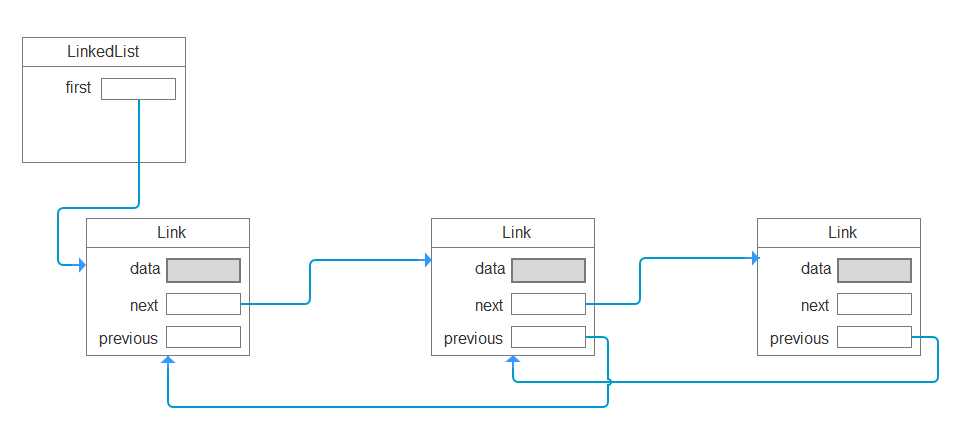标签:pre 16px font let string 取数据 last inf turn
链表将每个对象存放在独立的节点中,每个节点还存放着序列中下一个节点的引用。在Java中,所有链表实际上都是双向链接的——即每个节点还存放着指向前驱节点的引用。
双向链表结构如下所示:

获取数据慢,需要遍历查找;插入和删除快,只需要修改前后的链接。
1、定义节点类:
public class ListNode { int val; ListNode next; ListNode(int x) { val = x; next = null; } }
2、实现单链表:
public class SingleLinkedList { ListNode head = null; /** * 添加头节点 */ public void addHead(int x){ ListNode node = new ListNode(x); node.next = head; head = node; } /** * 添加尾节点 */ public void addLast(int x){ ListNode node = new ListNode(x); ListNode temp = head; while (temp.next != null){ temp = temp.next; } temp.next = node; } /** * 链表长度 */ public int length(){ int length = 0; ListNode tem = head; while (tem != null){ length++; tem = tem.next; } return length; } /** * 打印节点值 */ public void printNode(){ ListNode node = head; while (node != null){ System.out.print(node.val+","); node = node.next; } System.out.println(); } /** * 根据下标删除节点 * @param index */ public void deleteNode(int index){ ListNode node = head; if (index<0 || index>length()){ System.out.println("下标错误!!!!"); return; }else if (index == 0){ head = head.next; }else { for (int i = 1; i < index; i++) { node = node.next; } //跳过index项的node node.next = node.next.next; } } }
3、方法测试:
public static void main(String[] args) { SingleLinkedList linkedList = new SingleLinkedList(); linkedList.addHead(2); linkedList.addHead(3); linkedList.addLast(1); System.out.println("------添加节点------"); linkedList.printNode(); linkedList.deleteNode(1); System.out.println("------删除节点-------"); linkedList.printNode(); System.out.println(linkedList.length()+"---节点长度----"); }
4、控制台输出:
------添加节点------ 3,2,1, ------删除节点------- 3,1, 2---节点长度----
标签:pre 16px font let string 取数据 last inf turn
原文地址:https://www.cnblogs.com/happy2333/p/12966139.html